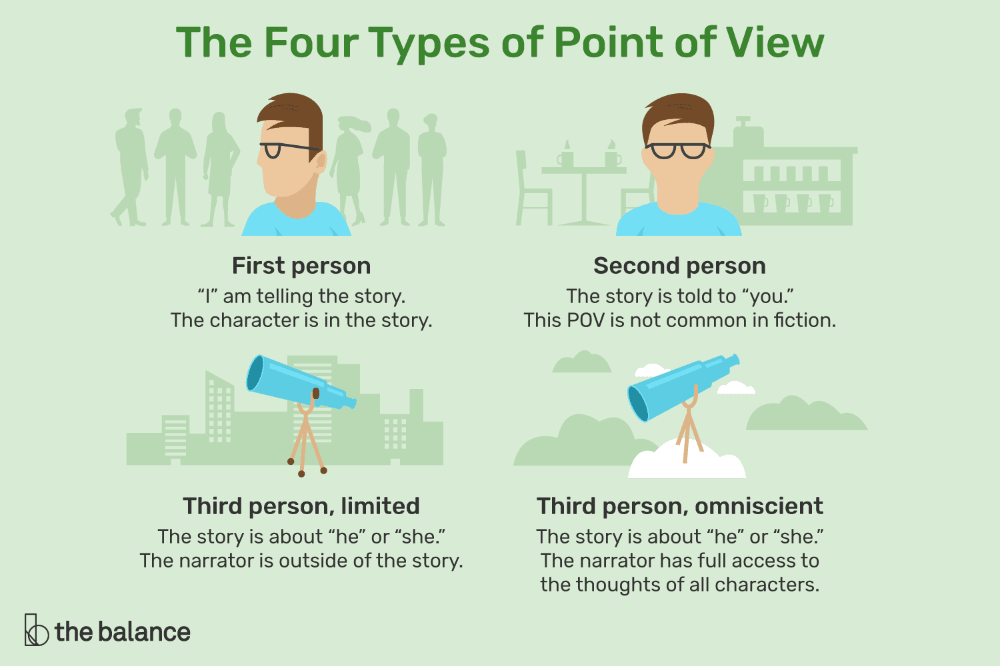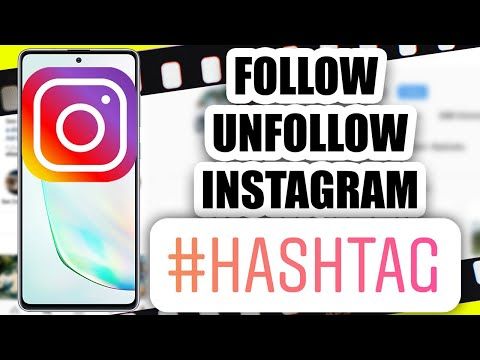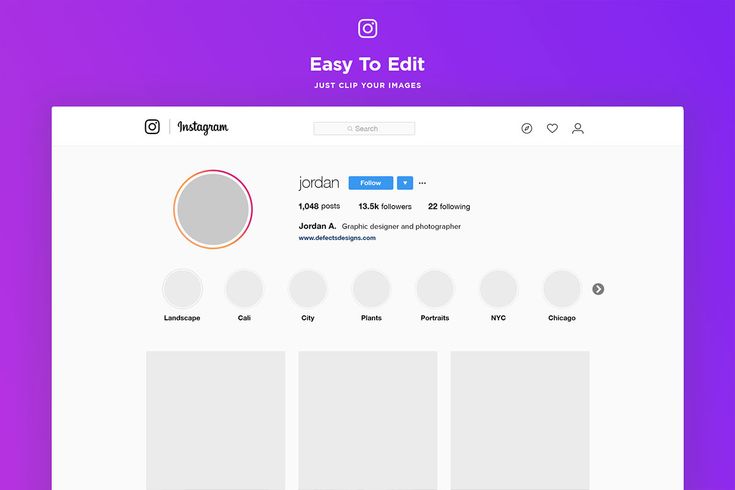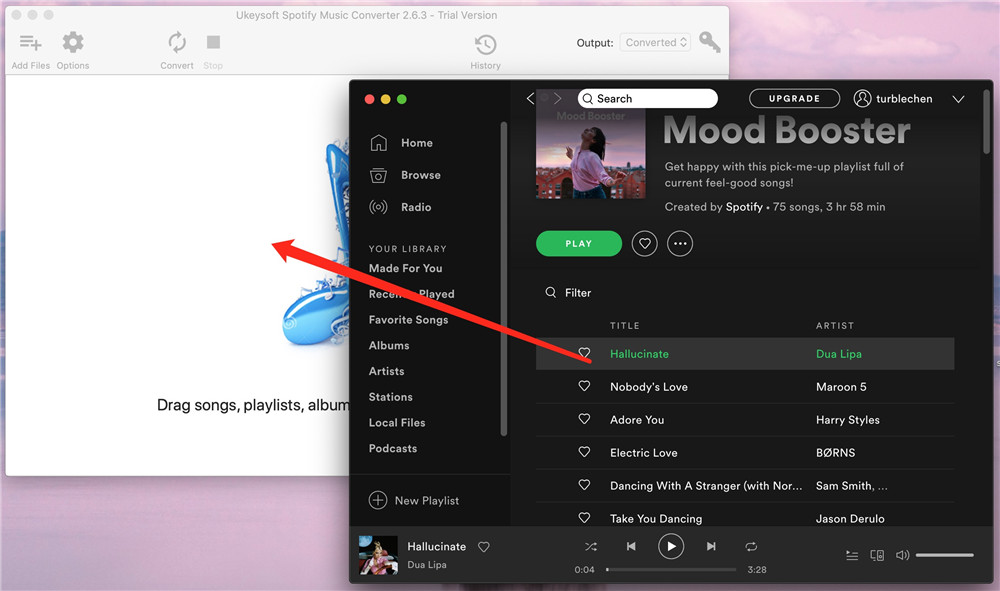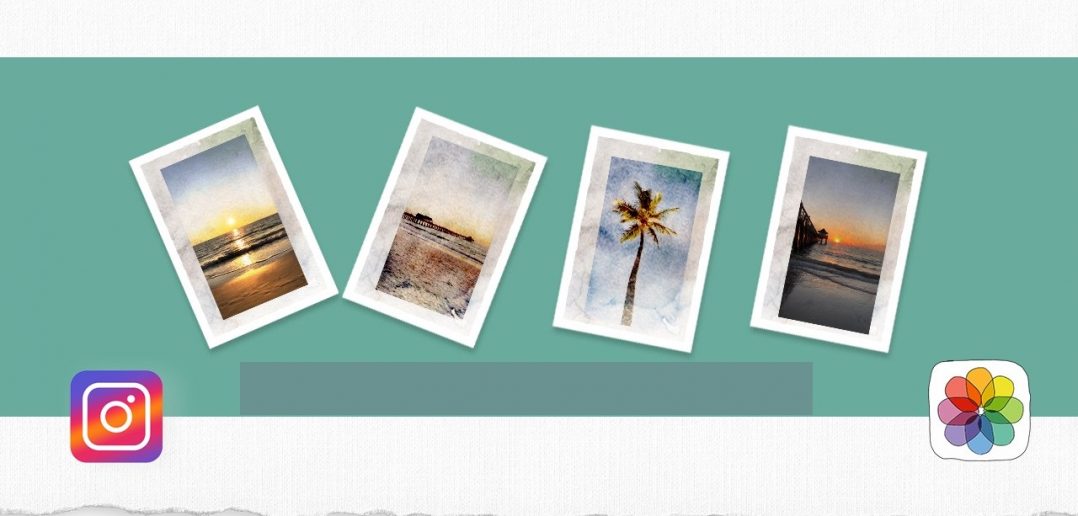How to advertise clothes on instagram
9 Instagram Marketing Tips for Clothing Brands
Last year, the Telegraph dubbed Instagram a “natural showcase for the fashion world.”
Even Chanel, one of the last labels to give in and start selling online, now employs its own dedicated Insta team in Paris.
And it makes sense if you think about it.
In 2017, 90% of Instagram’s users were under age 35, a.k.a. Millennials, who are renowned for their “now, now, now” culture.
Instagram provides the perfect platform for fashion brands to show off their latest lines and give savvy customers the chance to buy with a click.
The visual nature of Instagram essentially makes it a digital catwalk and, especially thanks to a couple of new features, it has become the go-to place for mobile users to shop fresh styles from their favorite labels.
Here, we’re talking about Story Swipe Ups, which send users directly to a sales page, as well as the ability to tag prices directly in Instagram posts.
Above and beyond just being a glorified online marketplace, Instagram can help clothing brands create a community and build real connections with their followers.
Researchers on Chanel’s Instagram strategy say, “Intimacy is the keyword in our analysis, as Chanel has become a leader in the field of communicating with millennials and targeting what they want to see.”
Let’s take a look at some of the innovative ways they and other clothing brands are using Instagram to drive sales and share their marketing messages.
How to Harness Instagram Marketing for Your Clothing Brand
1) Tap into the Power of User-Generated Content
Future anthropologists will confirm that we are now well-and-truly in the Age of the Selfie, with more than 69% of adults claiming to upload selfies to social media (that number increases to 87% if we solely look at millennials).
And people love nothing more than to share a photo of themselves in a cute outfit, which means clothing brands potentially have access to hundreds of pieces of user-generated content (UGC) that they can share with their audience and reward customers for self-identifying.
But UGC isn’t just for celebrating consumer-driven pics, it also dramatically boosts conversions. In fact, UGC is 5x more likely to convert customers than non-UGC.
Take Fashion Nova’s Instagram account, for example. Their feed includes a curated mix of pics originally uploaded by customers, who themselves become micro-influencers and are encouraged to create more free UGC — sounds like a win-win situation, right?
The hashtag #novababe is reserved for UGC (now boasting more than 630,000 tagged photos), from which the main Fashion Nova account reshares a ton (literally, like 20 photos a day).
2) Influencers Gonna Influence
A step above content created by customers is the domain of Influencers. Brands bring these popular industry figures and trend-setters on board to share their latest product lines.
This strategy gives the clothing brand access to an already-established and relevant audience, boosting their exposure in the fashion world.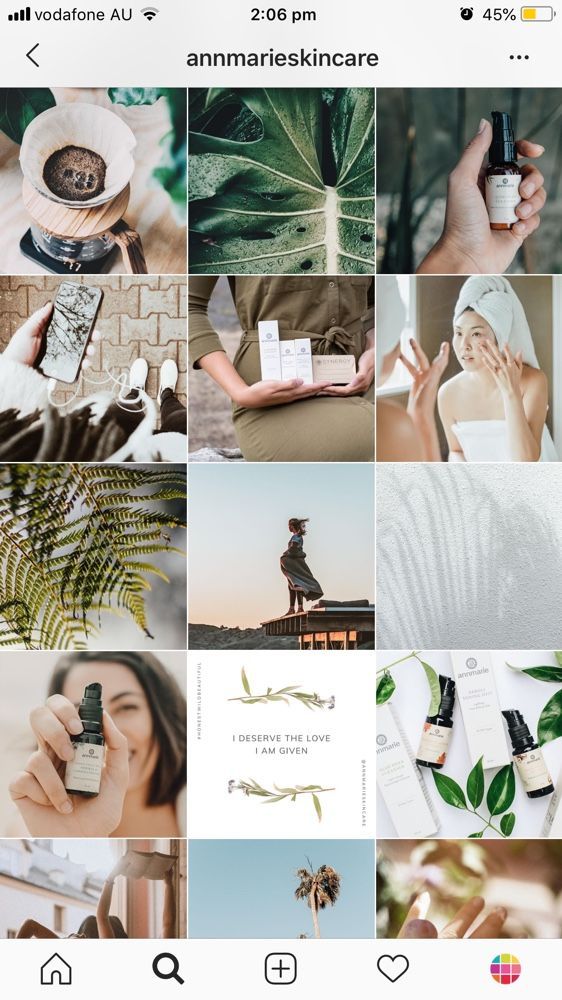
PuraVida Bracelets does this perfectly.
They have a whopping 80,000 influencers (known as “PuraVida Reps”) who regularly carry out marketing campaigns in exchange for free bracelets. This costs the brand next-to-nothing compared to the returns.
3) Go Behind-the-Scenes
There’s nothing we love more than getting a glimpse into what goes on “backstage,” behind our favorite brand’s shiny veneer.
Allowing your brand’s followers to learn more about who you are and what goes into your processes — the untold story behind creating new lines, making your clothes and any events you attend — deepens your fans’ connections, builds trust and nurtures a loyal community.
This is exactly what Kate Spade NY does with their Instagram account. In addition to styled pictures of their latest lines, they also share photos from awards, events, their stores and non-clothing-related happenings.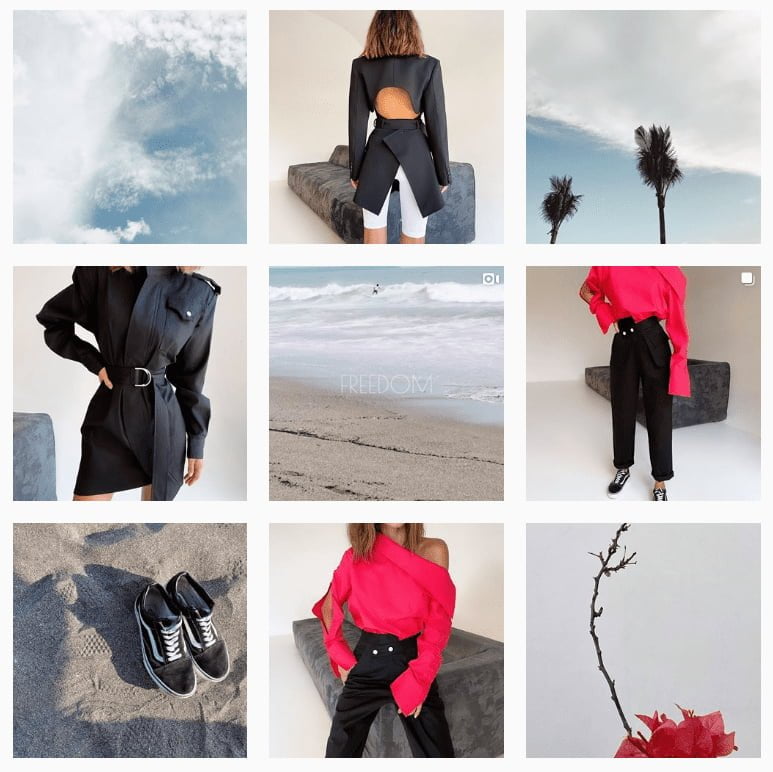
4) Make Your Personality Pop
Instagram is, like most social media platforms, a storytelling tool at heart.
Brands that have the most success aren’t just posting random pictures here and there without an obvious connection; they carefully craft a narrative that exposes their brand personality and builds trust.
Instead of just showing off your products, why not build up a story around them, and your brand, and share those images? Personality is what sets you apart from your competitors, so make use of it.
Outdoor clothing brand Fjallraven does a good job at this.
They still showcase their products, but in a way that ties in with their vibe. They share pictures of active people wearing their latest clothing items, but we also get inspiring snapshots of the great outdoors and landscapes that resonate with their audience.
More and more clothing brands are following this lead.
Even designer labels like Chanel and Hermes are becoming less and less product-driven, instead focusing more content on delivering an immersive experience for their followers.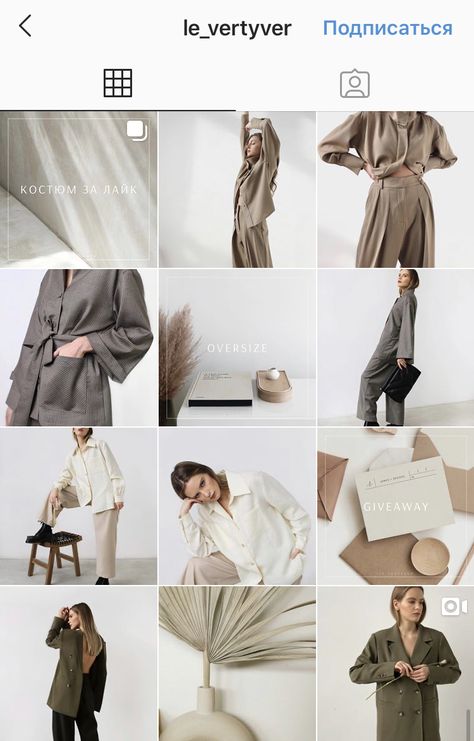
⇒ Access the Instagram Marketer’s Toolbox ⇐
5) Make Use of Instagram’s Features
Instagram has released a flurry of new features over the past couple of years, including the hugely-popular Stories element that lets users share in-the-moment snapshots of their lives that disappear after 24 hours.
But for clothing brands, the fun doesn’t stop there.
Brands with over 10,000 followers can unlock the “Swipe Up” feature, which means users who are watching a Story can simply swipe the screen and be directed straight to a relevant sales page.
This ties in with the “see it, want it, now” culture that we’ve got going on, and it means brands can tap into the instant gratification that today’s consumers crave.
Monastyle has used the Swipe Up feature to let viewers head straight to their new arrivals page where they’ll (hopefully) make an impulse purchase.
Stories (and Swipe Up) are great for announcing your new lines and releases, promoting sales or events, and boosting conversions straight from your Instagram profile.
The Story Highlights feature now allows you to group together similar Stories, keep Stories around for longer than 24 hours, and create content blocks that let new followers get oriented.
Anthropologie segments the different parts of their business with Story Highlights, including a Highlight reserved for new lines, one just for UGC, and another only showing behind-the-scenes content.
6) Product Tagging is Your Friend
Instagram is becoming more shoppable than ever, thanks to the ability to tag products.
You can tag as products appear in new posts or go back to old ones and add tags, and you can tag up to five products in a post with just one image or up to 20 in a multi-image post.
This means people can get the low-down on your products from your Instagram feed and, if they like what they see, can click the tag and be taken to a separate landing page where they can buy that item.
Quick note:
There are rumors that Instagram will soon be launching even more shopping features, including perhaps giving consumers the chance to add their card details and buy directly through the platform.
Follow these steps to turn your Instagram into a powerhouse:
- Go to your profile page and tap Options (or the gear wheel)
- Click on Products and press Continue
- Choose a product catalog to connect to your profile
- Tap Done
Now, when you post an image, you’ll have the option to link up products from your catalog — easy peasy.
Jack Threads regularly tags their products in their Insta posts, which then takes consumers to a designated sales page where they can buy on the spot.
7) Show Movement With Video
When Instagram launched video posts in 2013, more than 5 million videos were uploaded in the first 24 hours — and the public’s love of moving images hasn’t slowed down since… well, since ever.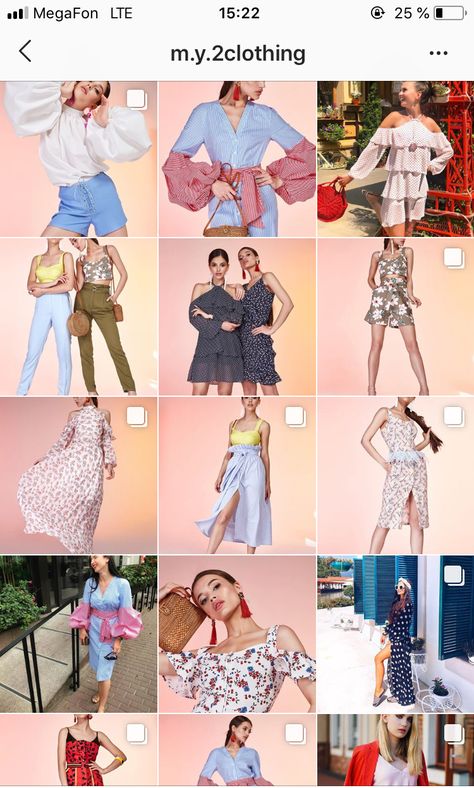
In fact, the platform has seen an 80% year-on-year increase in the number of videos shared.
If you’re not tapping into the power of video, you might be missing out.
Many clothing brands that only share images do just fine (the visual appeal of fashion is already pretty good), but think about it this way: selling clothes benefits from showing movement.
The color, style, and hang of an item of clothing, which is often a big part of the appeal of an outfit, can be seen so much better in a video than a still image.
View this post on Instagram
All new and action packed. Your sneak peek of the February collection has arrived. 💪 @gingerressler’s look + more available 2.01.
A post shared by Fabletics (@fabletics) on
Fabletics does a great job of showing users what their clothing looks like in action — which, let’s face it, is pretty handy when choosing activewear.
8) Retarget Website Visitors With Instagram Ads
72% of users have bought a product they saw on Instagram, and this stat might be even higher for clothing, which happens to be one of the easiest things to sell on the platform.
But just because people have bought something through Instagram, it doesn’t mean they’re going to buy from you the first time they come across your brand.
It’s been shown that it takes around seven touchpoints for someone to invest money in a product from a new brand.
This is where retargeting comes into play.
If you’ve ever browsed a website and then later gone onto social media to find yourself bombarded with ads from the website you’ve just left, congratulations — you’ve been retargeted.
Ads like this work particularly well for clothing brands because they remind users about specific products that they were on the fence about.
Aroa Bikini targets people who’ve been looking at their website and serves them up eye-catching ads in their feed to basically say, “hey, remember us? You liked our stuff when you were on our site, so here’s some more!”
To use targeting, you identify people who have visited your website without purchasing and send relevant ads to them via their Instagram or social feed.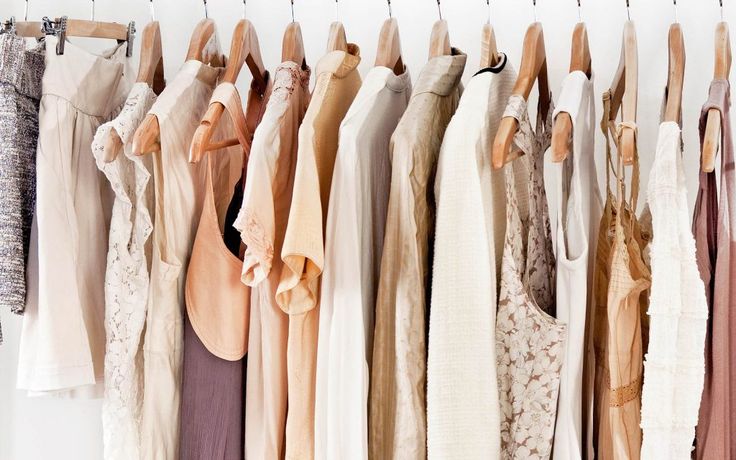 Simple (but a bit technical).
Simple (but a bit technical).
Want to get started with this? Get in touch with our paid media team to discuss how you can reap the benefits of retargeting.
9) Make Chemistry With Experimental Instagram Features
Because it’s such a visual platform, Instagram gives brands the chance to get really creative.
There are enough features and options that you can play around and come up with a strategy that is uniquely suited to you and your audience. Don’t forget to have fun with it!
Take Off-White, one of the biggest new streetwear brands of the last decade, who have created their very own Instagram face filter that users can incorporate into their Stories.
They definitely paid a team of programmers for that filter (there are much cheaper ways to promote your business) but its prominence in the Stories filter panel is doing great stuff for the Off-White brand — especially since users have to follow the account to activate the filter.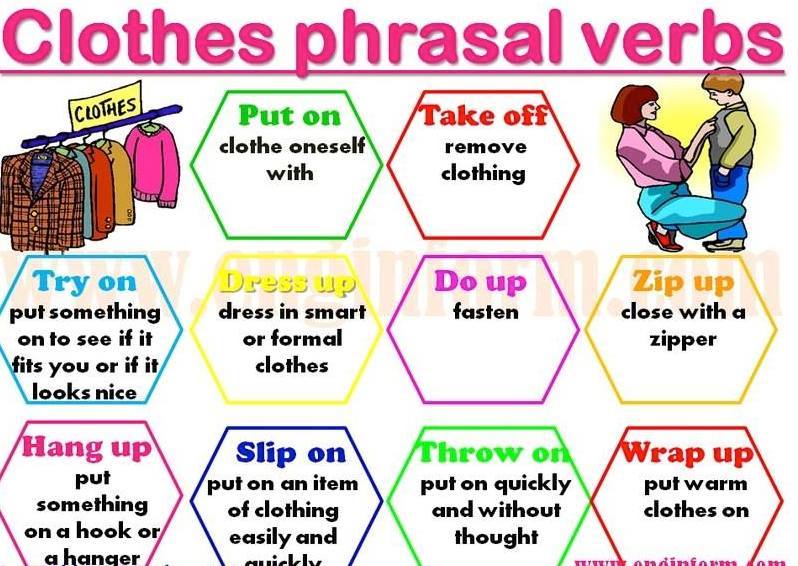
Now that you’ve got our best marketing tips for today’s Insta-audience in your toolkit, get out there and make it work!
Style It Out With a Fab Instagram Campaign
Deciding which of these tactics to use depends entirely on who you are as a brand and what your audience is interested in.
Use Instagram as the perfect showcase that it is for your latest lines (whether that be black Gothic wedding gowns or performance/racing swimsuits), and build up a community by engaging your followers… but also remember to get creative with your marketing. There are plenty of ways you can do that.
Maybe you’ll start saving and segmenting your Stories in Highlights. Perhaps you’ll start incorporating video into your strategy, or you could go all-out and start designing your own branded dancing .gifs or filters.
Whatever you choose to do, it’ll be fun and probably can’t really hurt — Instagram is one of the best platforms to sell clothing on, so feel free to try what feels right. Doing so is what got you this far!
Doing so is what got you this far!
What are your favorite clothing brands on Instagram?
The #1 Instagram Scheduler and Stories Scheduling Tool
With over 1 billion monthly active users, the power and scale of Instagram can’t be denied, especially when it comes to fashion brands. Yet, with countless fashion brands desperately seeking to connect with and convert their target audiences on the platform, how in the world of social media marketing can your brand stand out?
Unless you’ve been living under a rock, you’ll know that Instagram marketing for fashion brands can be fast-paced, competitive, and – let’s face it – downright intimidating. Fashion brands like Jacque Mus have nailed Instagram – as evidenced by their iconic catwalk through the lavender fields of Provence or their viral collaborations with fashion icons like Kendall Jenner.
Yet it’s not always e-commerce brands with enormous marketing budgets that can pull off Instagram marketing magic. Fast fashion US-based retailer Nasty Gal has unleashed a killer Instagram marketing strategy over the past decade, combined with bright, energetic content. The result? A vibrant Instagram feed that is full of compelling visuals.
Fast fashion US-based retailer Nasty Gal has unleashed a killer Instagram marketing strategy over the past decade, combined with bright, energetic content. The result? A vibrant Instagram feed that is full of compelling visuals.
Even smaller brands like Australian-born clothing brand Meshki have been able to carve out a niche on Instagram with their firm stance on body positivity and inclusivity. The brand has now amassed over 2.1 million Instagram followers.
So, how can your brand stand out? How can you supercharge your Instagram marketing strategy for success, all while staying true to your brand values?
Maybe you’re just starting out and need to focus on building an audience and connecting with them, and fast? Or maybe you’ve already tried your hand at Instagram marketing but it’s just not yielding you any solid results yet?
Either way, we’ve pulled together the top ways fashion brands can boost their Instagram marketing strategy and up their Insta game. Read on to find out more!
Read on to find out more!
The Rise of Instagram Marketing for Fashion Brands
So, why is Instagram marketing so successful for fashion brands in particular? Well, the visual nature of Instagram and the ease of sharing and connecting means that the platform is perfectly suited to fashion brands and their followers.
When it comes to fashion, everyone has an opinion. Instagram makes it easy to share those opinions, start conversations, and develop dedicated fashion communities.
But don’t take our word for it; Lyst called Instagram the “most powerful” fashion trend of 2018. i-D magazine claimed that “no other platform has defined visual culture, and especially fashion, with such visceral omnipotence”.
In fact, Instagram marketing is now so integral to the fashion world that we are starting to see Instagram influencing fashion, rather than the other way around. Fashion brands all over the world have started to create bright, outrageous “Insta-worthy” outfits; bold colors, loud logos, and outlandish feathers all make high-performing content Instagram. This kind of apparel is sure to stall the scrolling thumb and sell like hotcakes on the platform. On the other hand, subtle tailoring and neutral-colored fabrics may not always grab the attention of the Instagram fashion pack.
This kind of apparel is sure to stall the scrolling thumb and sell like hotcakes on the platform. On the other hand, subtle tailoring and neutral-colored fabrics may not always grab the attention of the Instagram fashion pack.
In the same token, Instagram has leaned into the popularity of fashion on the platform, introducing features like shoppable posts and collaborative Instagram posts. All this makes it easier for influencers and collaborators to connect with brands on the platform – and vice versa!
How Can Fashion Brands Level Up Their Instagram Marketing Strategy?
If fashion brands want to stand out on the Insta feed, all they have to do is create eye-catching “grammable” content, add some CTAs, and upload their products to Instagram Shop, right? Well, no…. not quite.
It takes time, strategy, and effort to convert all those “likes” to conversions and drive sales on a continuous basis.
Instagram marketing, when done well, can unlock access to a seamless path to conversion for fashion brands to take advantage of – BUT, all of this has to be done strategically.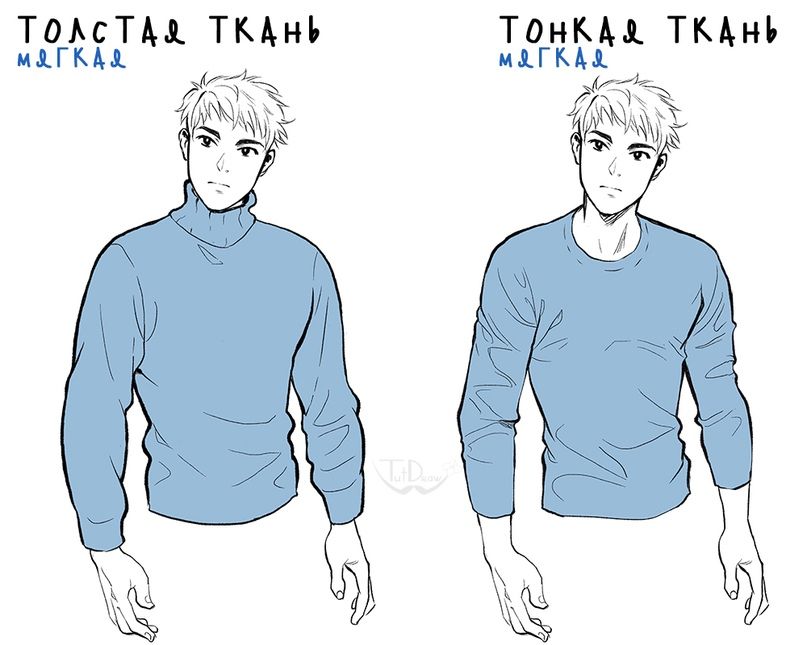
As with any other marketing channel, businesses first need to understand (and then connect with) potential customers, establish a point of difference, and make the customer journey as simple as possible. Even small businesses can score a piece of the Instagram pie if they take the time to understand and connect with their target audience.
To get you on the straight and narrow, keep reading. We’ll uncover our top Instagram marketing tactics that can help brands in the fashion industry see success. Along the way, we’ll explore the best of the best fashion brands who have perfected the Instagram marketing game.
1. Optimize Your Profile and Your Instagram Shop
First things first – optimize your Instagram profile. After all, there’s no point in sending countless potential customers to your profile if it’s a big old mess once they get there.
If you’ve already done this, consider whether or not you could still make some improvements to your page.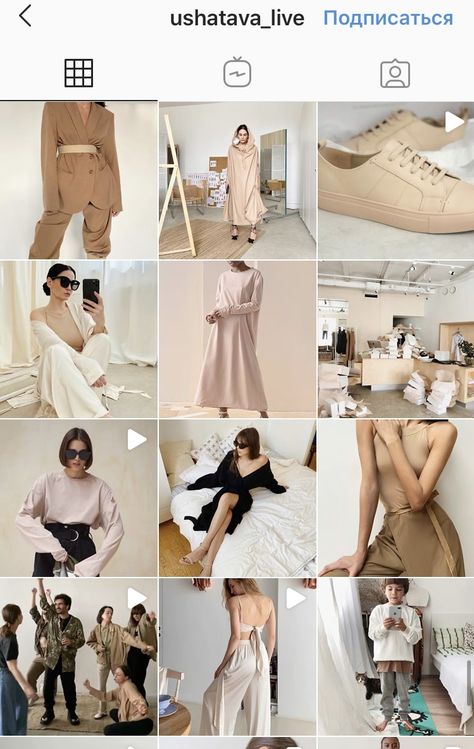 Be sure to check the following:
Be sure to check the following:
- Is your Instagram username easy enough to find? Ideally, your username should simply be your brand name, or your brand name with a country-specific suffix on the end, such as au (for Australia) or eu (for Europe)
- Do you have a clear, compelling display picture and a cohesive feed with clear visuals?
- Is your Instagram shopping set up correctly with all your products (or, at the very least, your best-selling products) included?
- Are you posting regularly?
- Are you posting Instagram Stories regularly?
- Have you saved your best Stories to Highlights Reels on your Instagram profile?
- Does your Instagram bio clearly communicate what your brand is all about? This is probably less important for well-established global brands, but for new fashion brands or lesser-known labels, you need to tell people what you’re all about! For instance, Billy J Boutique, below, has clearly outlined who their brand is and what they’re all about in their bio.
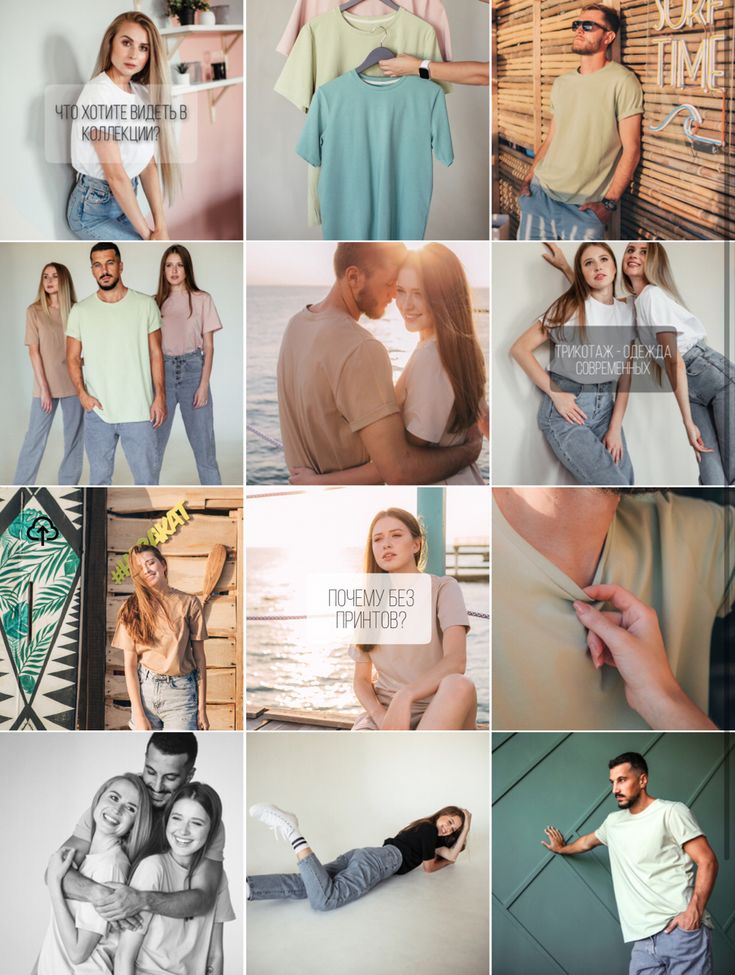 Think of this in the same way you think about SEO. Include any of the main keywords that people might search for when they are looking for brands like yours
Think of this in the same way you think about SEO. Include any of the main keywords that people might search for when they are looking for brands like yours - Do you have an Instagram hashtag strategy? Are you using up to 30 relevant hashtags for each feed post, including branded hashtags?
2. Utilize Instagram Stories
If you’re not utilizing Instagram Stories to their full potential, you’re missing out! As it’s available in a different section to the main feed, posting Instagram Stories gives you even more chances of being seen by your audience, and offers powerful opportunities to connect with your audience with full-screen visual content.
What could be better?
If you’re not too sure what kind of Stories content to post, try one of the below ideas:
- Show a “behind the scenes” or BTS snippet of your business. That might include making products, visiting customers, or offering a glimpse into a new service you’re launching
- Post a video with a sneak peek of an upcoming collection
- Turn your existing blog content into a series of Stories, with text or voiceover to explain
- Show an “on location” video when you’re shooting your next collection
- Post about an upcoming sale
- Post a “how-to” tutorial about styling one (or more) of your products
- Repost user-generated content (with their written permission, of course!)
- Use Stories as a way to educate your customers by posting information about your products or services
To get more mileage out of your Instagram Stories, you can also post your Story as a Reel or add it to your Highlights page
Check out more unique Instagram Stories examples here.
3. Update the Highlights on your Instagram Profile
In the past, some brands felt that Instagram Stories were a little redundant. After all, sure, Stories can be highly engaging, but what’s the point of sinking money into a content format that is only available for 24 hours?
Then Instagram released the Highlights bar. Located underneath a user’s Instagram bio, the Highlights bar allows users to save their best Stories in these Reels, which can be labeled according to what they contain.
In doing this, Instagram users can extend the life of Instagram Stories for longer than 24 hours and save important or high-performing content.
For instance, the clothing e-commerce giant, Revolve, has added various Reels in their Highlights bar. These categories feature content about events like New York Fashion Week, as well as Highlights for various collaborations and campaigns they have run.
If you wanted to add your own Highlights Reel, here’s how:
- Head to your Instagram profile, hit the icon with three lines at the top right-hand side of your profile, and select “Archive”
- Browse through your Stories.
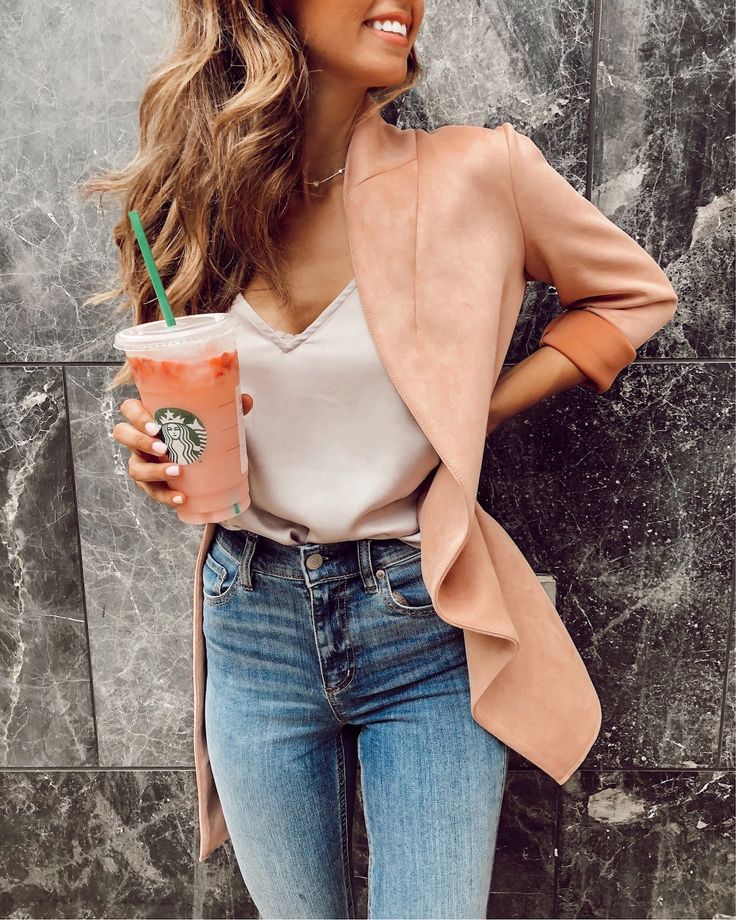 When you find one that you want to add to a Highlight, simply select the heart icon called “Highlight” at the bottom of the screen
When you find one that you want to add to a Highlight, simply select the heart icon called “Highlight” at the bottom of the screen - Either add to an existing Highlight or create a new one by hitting the plus icon labeled “New”
- Label your Highlight and add any image you like. You can always change these selections later
- Your new Highlight should then appear on your profile and you can add new Stories to it, or add archived Stories in the same way
There are so many different Highlight Reels you could add, but many fashion brands will add Highlight Reels and add them to the below categories:
- UGC Content
- Competitions and giveaways
- Seasonal clothing or collections
- Information about sustainability or production processes
- Press clippings
- New clothing arrivals
4. Hey, You! Create Attention-Grabbing Content
Now that you’ve optimized your Instagram profile, it’s time to think about content.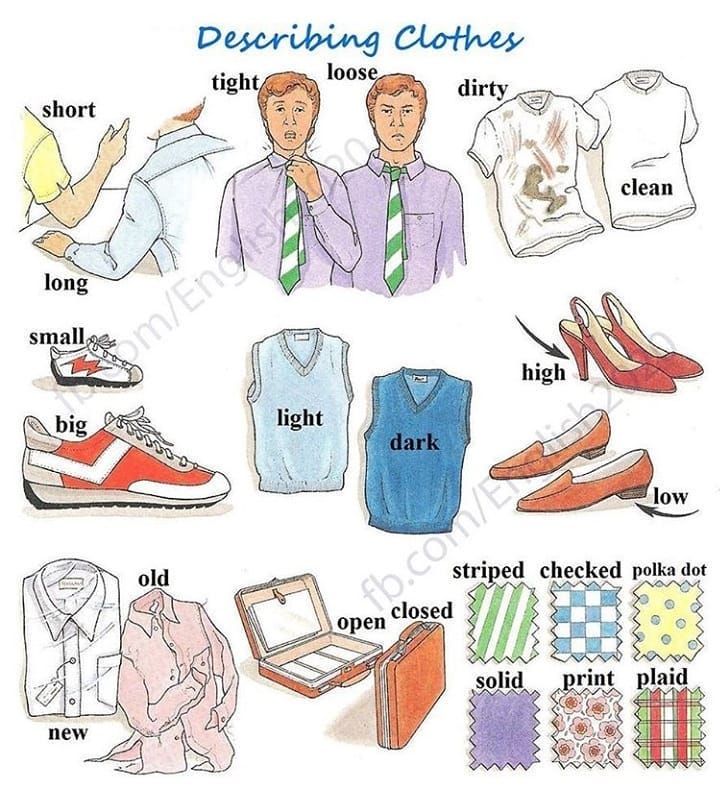 Your content really is the bread and butter of your success on Instagram.
Your content really is the bread and butter of your success on Instagram.
Your content strategy should guide your content creation efforts, so if you haven’t yet created one, now is the time!
Succeeding on Instagram starts and ends with relevant high-quality content. Above all, each piece of content you create needs to hit one of the five E’s:
- Engage; by using tips, how-to guides, tutorials, or free trials
- Entertain; by bringing your brand story to life. Use storytelling methods such as long-form content, video content, audio, or Instagram carousels
- Educate; by using Instagram Stories, Highlight Reels, or carousels
- Empathize; understand your target audience’s pain points and try to provide solutions to those problems
- Encourage; nurture your community and keep up the dialogue. Keep leads warm and build lasting relationships via Instagram and your other channels
You might not see success straight away, but, if you continue experimenting, you’ll soon discover the content that works for your brand.
For instance, clothing brand Cotton On posts a combination of flat-lays, lifestyle content, user-generated content, helpful video content, and campaign images.
Brands like Folk Clothing, however, are speaking to a slightly different demographic. The brand posts a combination of product images and videos educating Instagram users about sustainability and design.
5. Create Influencer Marketing Campaigns
When it comes to fashion brands on Instagram, influencer campaigns can be a powerful way to promote your products and expand your reach to the masses. Even micro-influencers can be integral when it comes to getting your brand name out there.
Some marketers have got Instagram influencer marketing down to a fine art. Brands like Farfetch collaborate with everyone from designers to artists and influencers to expand brand awareness. Not only does this create unique and engaging content, as we see below, but it also means that these collaborators are sharing the content on their channels with their expansive audiences, meaning campaign content quickly goes viral.
NAKD Fashion is another clothing brand that embraces influencer marketing, collaborating with micro Instagram influencers to well-known mega influencers with millions of Instagram followers.
By giving their influencers discount codes, as they have with influencer Freya Killin, they are able to see which influencers are successfully able to convert their audiences.
Influencer content can also provide marketers with an additional content stream. You can add influencer content or user-generated content to your existing content calendar to further promote your products. Each pic or video that an influencer generates is one that you don’t need to create yourself!
Get creative with your influencer content; ask them to create how-to tutorials, styling videos, gift guides, and more! Just be sure to establish clear metrics for measuring your influencer campaigns before they launch.
You can assess reach, engagement, review comments, and you can measure the number of sales and their basket size, if your chosen Instagram influencers have been given a unique discount code.
6. Embrace Your Creative Side
Let’s face it; Instagram is THE social network that the fashion pack uses. But that also means that it can be a highly competitive landscape, full of other fashion brands clamoring for the attention of their chosen demographic. Therefore, you need to stand out with creative content!
Instagram Stories offers endless opportunities for marketers to get creative. Utilize Polls, Questions, and Quizzes on Instagram Stories to get your audience to interact.
This can also be the perfect way to get your audience involved. It can open up conversations with your followers about anything from your products and services to what users would like to see on social media. This dialogue can be an important source of feedback and inspiration and can even feed into pricing, customer care, and product development!
With your feed posts, experiment with creative video content, tutorials, cinemagraphs, colorful photoshoots, and unique editing effects. Use trending content and other brands’ content as inspiration. Just remember; the goal here is to try to create something unique, not to copy other brands.
Use trending content and other brands’ content as inspiration. Just remember; the goal here is to try to create something unique, not to copy other brands.
To launch her latest collection for SS22, Vera Wang created a series of short, surreal videos featuring close-up shots of garments from her new collection on models. The camera sweeps over, above, and around the model to capture the garments from all angles, resulting in a hyper-modern, hyper-realistic view of the clothing.
7. Encourage User-Generated Content
Like influencer marketing, user-generated content (or UGC) provides fashion brands with a steady stream of content and allows users to engage with the wider fashion community. UGC is any content derived from users. On Instagram, that’s usually content like a video review, a tutorial, a vlog, or photos of a brand’s products or services.
If you’re completely new to UGC, you can start with a small campaign and then record your learnings. Then, over time, you can start to build larger campaigns based on what worked – and what didn’t!
When done well, UGC can amplify your reach and engagement rates, draw prospects into your funnel, and generate amazing content that you can re-share – with permission, of course.
Creating a UGC campaign is easy, but getting customers to share their content isn’t! For fashion brands, UGC usually consists of shots of consumers wearing garments or featuring them in flat-lay images. UGC campaigns work by simply asking users to share this content. As Instagram is all about sharing pics of ourselves, UGC might simply ask them to go one step further and tag the garments they are wearing or use a campaign hashtag.
If this isn’t enough, however, marketers can incentivize UGC by offering a discount or a prize for the best UGC posted every week or month.
To make it easier to view and collate your brand’s UGC submissions, create a branded campaign hashtag. The hashtag should be easy to remember and should be clearly communicated to customers. Tell them about your UGC campaign in every way you can – send an email newsletter, post about it on your Instagram account, and include the hashtag in your product packaging.
Discover our ultimate guide to UGC marketing here and launch your campaign today!
8.
It’s all good and well creating eye-catching content, collaborating on campaigns with bloggers, and launching a UGC marketing campaign, but how do marketers convert all that activity into dollars and cents?
Well, it’s all about your call-to-action, also known as your CTA.
If Instagram users love your content and like and comment on your posts frequently, that’s great. Some of them might even head straight to your website after seeing your content to shop, too, which is even better! Of course, Instagram Shopping makes the path to purchase that much faster.
But you may not have every single product uploaded to your Instagram Shop yet, especially if you’re a fast-fashion retailer releasing new products every week. Therefore, having clear, compelling CTAs means that your efforts will be far more effective. CTAs on your posts will tell users exactly where to find videos, products, or other information.
For instance, Nasty Gal tells users to head to the link in their Instagram bio to shop new arrivals, like in the post below.
On the other hand, brands like ASOS have such a large range of products that it would prove difficult to keep their Instagram Shop in order. Instead, they add product codes within the caption of each of their feed posts, as in the example below.
9. Utilize Instagram Shopping Features
Instagram Shopping allows you to convert all that engagement into sales and is an important tool for fashion brands wanting to use Instagram as a key sales channel.
To set up your Instagram Shop, first, you need to have an Instagram business account that is connected to a Facebook page. Next, set up a Business Manager account. This will allow you to create your shop in Commerce Manager. If you’ve already created a Catalog on Facebook, you can use that same Catalog to tag products on Instagram.
If not, once your business account is ready to go, then you’re ready to set up your Instagram Shop! You can do this directly through e-commerce platforms like Shopify or BigCommerce. The product information, pricing, and product images will be automatically uploaded to your Catalog.
Or, you can create your Catalog manually by uploading a list of your physical products into your Catalog, complete with product descriptions, images, and pricing information.
Once your goods have been saved in your Instagram Shop, you just need to submit your account for review and turn on Shopping. From there you should be able to start tagging products in your posts and Stories. Try to tag your products in all your product posts and Stories. That said, you don’t want every single post to be a tagged product post! Ideally, you still want to post content that builds your brand as well as entertains or educates your audience.
If you’ve already done all this, you can still continue to optimize your Shop by adding collections and tagging user-generated content in your Shop.
To create a collection, simply head to your Commerce Manager and click “Edit” and “Add Collection”. Simply create your Collection the same way you’d add products, add all the products to your collection and hit “Publish”.
To tag user-generated content in your Shopping tab, simply find a post that has tagged your brand. Hit the three dots at the top right-hand corner of the post, and then hit “Request to feature in shop”. Then the influencer or content creator will be notified of your request. If approved, that image will show up when users hit that product on your Instagram Shop.
Ready to Embrace Instagram Marketing in Fashion?
Fashion brands and Instagram marketing go together like cheese and wine. If you work with a fashion brand not utilizing this highly visual, compelling, and addictive social media platform, you’re missing out!
Hopefully, this guide has demonstrated just how easy it is to create and implement a social media strategy. But no matter how simple it might be, really winning at Instagram marketing does require time and effort. Even once you create an Instagram strategy and start to see results, you need to constantly try new things so your followers don’t get bored and you can attract even more new users to engage with you.
It’s all good and well creating one super-awesome viral post, but the key to maintaining a solid social media marketing strategy is consistent content.
Thankfully, we can help you there! Instagram post scheduling means that you can create and execute a consistently fabulous content marketing calendar and automate your social media posting duties. In the meantime, you can free up hours in your schedule and work on coming up with amazing ideas for your next batch of content. You can even focus on other tasks, like responding to comments or creating Instagram ads so you can reach more users.
Learn how to automate your social media marketing with our easy-to-use scheduling tool so you can focus on creating unique content that will help you stand out from the fashion crowd.
Ready to stand out from the rest and entice more potential customers? Well, what are you waiting for? Start working your way through our top Instagram marketing tips and report back with the results!
How clothing brands work with social media
Research shows that people are increasingly shopping online or choosing items on social media and then purchasing them offline. For brands of clothing, accessories and footwear, a social media presence is essential. What social networks to cover, what is your audience looking for on the Internet, what content do users like?
According to Nielsen, in 2016, 88% of Russians in an online survey admitted that they had bought an item online at least once. At the same time, 45% of respondents prefer to buy clothes and accessories in offline stores. But making a purchase is the final decision. Before that, users look at brand websites and social networks. Therefore, promoting a clothing brand on social media is necessary even if you are not getting sales through this channel.
Clothing shoppers and social networks
Researchers from Facebook found that the peak of discussions of clothing and accessories falls on the period before Christmas. Conversations were supposed to be more active during the launch of new collections. But the hypothesis was not confirmed: during 2016-2017, interest in the topic of shopping, clothing and accessories remained approximately the same.
The most active users discuss fashion on Saturdays.
Another Facebook study, Feed Fashion, found that fashion fans check social media very frequently: on average, they view 5 times more photos than regular users and check Instagram up to 15 times a day.
The study compared women who use the #fashion hashtag in their posts and those who don't. Those who use this hashtag (that is, they are interested in fashion) follow 2.21 times more profile pages and brands. Those who use this hashtag (that is, they are interested in fashion) have an average of 3.63 times more followers, and their number of subscriptions to the pages of other people and brands is 2.21 times higher than other users. They publish 16 times more posts and get 12 times more comments.
Fashion lovers watch videos 2.35 times more often, and the videos they choose are usually longer.
Promotion of a clothing brand on social media
Bloggers
In Instagram, a fashion brand, all roads lead to bloggers. It's not necessarily fashion influencers attending shows with millions of followers. Look for ordinary people who are read and commented by the people you need. Young mothers or student girls will become opinion leaders for you for barter (unless, of course, they have an army of subscribers).
To track the effectiveness of bloggers, give everyone a personal discount promo code.
Look for bloggers in marked accounts with brands, in subscriptions with other influencers and in your target audience, in the top hashtags.
Targeting
Use all the possibilities of targeted advertising: promote posts on VKontakte, Facebook and Instagram, come up with creative stories and launch promotion with them.
By the way, on the 1ps.ru blog you can find a lot of useful materials about promotion on the Internet.
If you have an online store, pay attention to retargeting. Show the user products that he chose, but did not buy.
See how brands do it:
- Use a carousel to show many products at once.
- The clothes are clearly visible in the photographs, they are interesting to consider.
- Ad text is unusual, native, without direct selling.
Monitor efficiency
Consider evaluating the effectiveness of campaigns before you start promoting a clothing brand. Consider what KPIs (Key Performance Indicators) you will track:
Followers
The growth of account subscribers, at first glance, means that you are getting a loyal audience. But don't give too much importance to the number of subscribers: due to the ranking algorithms of your news feeds, not all of them will see your publications, so it is more important to monitor your reach.
Coverage
The more people see your publications, the more sales you will have and the higher recognition. Of course, if the posts are interesting to the target audience.
Involvement
Measure the content you publish: comments, likes and reposts speak about the loyalty of subscribers and interest in your products.
The built-in statistics of Vkontakte does not display this data, but Popsters has this option.
Sales
Evaluating the success of SMM in terms of sales is not always correct: social networks often work to increase awareness and reputation. And tracking a sale from social networks can be difficult if you don’t have a site with customized analytics.
If you still have a website, keep track of assisted conversions in Google Analytics: often the sale comes from one source (for example, contextual advertising), but the client first learned about you in another place (on social networks).
What content to publish
It is impossible to imagine a clothing brand account without quality photos and videos. Shoot products against a white background or like bloggers - in the interiors of trendy cafes, in the city.
What to write about? Let's take a look at what content brands make. For example, let's take the small Russian brand Private Sun and the well-known H&M.
Using Popsters.ru we uploaded the most popular posts in communities.
Private Sun
The most popular post of the month (with the most likes) is a lifestyle-style photo where the coat is clearly visible. In the comments, subscribers note that they like the photo: it is thanks to the simplicity and the ability to repeat this image on their own that the publication has become popular.
In second place in terms of the number of likes is a post about a discount. And again, a lifestyle photo with a product. Discounts and sales always attract attention.
According to the Mail.ru Group study, the majority of Russian-speaking users subscribe to brand pages on social networks in order to follow discounts and promotions.
Also in the top by the number of likes is a post with a photo of a blogger.
The effectiveness of content and ads with celebrity faces can be explained by the cognitive bias “Familiarization effect”: people experience unreasonable liking for what they are already familiar with.
H&M
The most popular post is a contest. According to the terms, users do not need to be active, but people liked this post anyway.
With the help of a competition, the brand drew attention to the opening of a new store.
Lifestyle photo and fashion quote.
Terminals
- Clothing, footwear and accessories shoppers use social media to select products, but often shop offline.
- Fashion lovers are active on social networks, constantly posting new content and following brands.
- Use targeting and bloggers to promote your brand.
- Take high-quality photos, organize contests, publish photos of bloggers with your product.
- Evaluate the effectiveness of SMM in terms of engagement and coverage of publications.
Useful articles on a similar topic:
- Impact of smartphones on offline sales;
- How to boost social media sales during the holiday season.
The most honest will survive: fashion brands — how they will work without Instagram
The Tverskoy Court of Moscow on March 21 recognized the activities of the social networks Instagram and Facebook, owned by Meta Platforms Inc., as extremist and banned them in Russia. Meanwhile, in our country there is a whole galaxy of brands that have grown from Instagram stores into a serious business. Perhaps the most revealing case is 12storeez, which went viral as a brand of twin sisters Marina and Irina Golomazdin (that is, it initially relied on storytelling and visual content), and then became the first Russian partner of the international retailer Farfetch and the owner of almost 50 stores in different regions of Russia — from Moscow to Vladivostok. Today, his Instagram, which actually set the standard for how fashion brands need to run social networks, has 1. 5 million subscribers. And despite the fact that, according to the co-founder and 12storeez CEO Ivan Khokhlova , the team expected the site to be banned and periodically thought about possible risks, no one believed until the very end that this could still happen, which means they did not prepare a detailed plan.
“Problems need to be solved as they come up,” says the entrepreneur. — In addition, we could afford not to think about it and not worry, because 12storeez is quite diversified in terms of sales channels. We have a website and an application with a multi-million monthly audience, a base of phones and emails that we send out to, a network of retail stores, after all. In other words, the weight of Instagram in this structure was no longer very large for us.”
Advertising on RBC www.adv.rbc.ru
The court banned Instagram and Facebook. What does this mean for users
The solution to the problem through retail, which contributes to the expansion of the audience and its visual acquaintance with the assortment, is also seen by 2mood CEO Sergey Borisov . The brand has half as many subscribers as 12storeez and fewer stores - eight. However, in terms of her verified image, she is in no way inferior to her colleagues: all new items are invented and demonstrated by the founders, two girls with a similar appearance - Polina Podpletnaya and Kristina Khoronzhuk (hence the name of the 2mood brand - “two moods”).
2mood
© press service
Borisov says that in the early stages of its existence, Instagram was the most inexpensive marketing platform that provided an opportunity for young entrepreneurs with a small budget to develop. “This is due to the fact that in classical marketing, large players buy up almost all advertising, and it is almost impossible to interrupt them in order to increase awareness. That is why it will be easier for those who started earlier and managed to tell about themselves to as many people as possible. The rest will have to look for new alternative sources of social and media marketing,” says 2mood CEO.
We are talking about very young, but promising Russian brands - for example, nastyamasha, which debuted in the spring-summer 2020 season, but has already managed to dress Kylie Jenner and Vogue magazine models in different countries. For the founders, twin sisters Nastya and Masha Vanyushins , Instagram has been and remains the only promotion channel, since they do not yet have a website. Therefore, blocking is perceived by them much more critically than by older colleagues, but not catastrophically. “Yes, Instagram is a conduit between us, buyers, and potential clients. It is through him that all stores come to us with proposals for purchases. But the sales themselves are carried out directly through distributors,” they note.
The sisters do not plan to abandon the social network (the Prosecutor General's Office announced that they would not punish posting in Meta products), in particular, because they focus not so much on Russian clients as on foreign ones. Moreover, in the week since Instagram was blocked, its audience has decreased by only 16% (for comparison: the number of Facebook users has decreased by 40%). Saves VPN, although some of its services are also blocked.
The importance of maintaining contact with Western audiences is also mentioned Lesyanebo CEO Anna Sysoeva . The brand has gained great popularity in the US and Europe: trouser suits by Olesya Shipovskaya are worn by models Gigi Hadid, Elsa Hosk and Irina Shayk, influencer Leonie Hanne and, ironically, Instagram fashion director Eva Chen. “Unfortunately, these sanctions affected us quite strongly,” Sysoeva explains. — Instagram for our brand was not just a promotion channel, but also a platform for interaction with the global fashion community. And now they are just trying to turn us off.”
10 Russian clothing brands popular with foreign stars
Designer Maria Belik believes that foreign audiences will have to be forgotten for a while. And the reason for this is not a technical failure, but a reputational one - "a problem that all Russian designers faced on February 24." However, there have been no mass cases of cancellation yet. The loudest precedent was the cancellation by the Federation of Haute Couture of the virtual show of Valentin Yudashkin, which was supposed to take place at Paris Fashion Week on March 8.
Belik herself has “trained intensively to separate herself in the domestic market” over the past two years, as the pandemic prevented her from flying freely to international fittings. Having got her hands on creating collections for the fashion house Ulyana Sergeenko and various brands in Paris, she chose the tailoring segment for her own brand, as it is more flexible and “relies on an audience that is most resistant to economic turbulences of any magnitude.”
Despite the fact that the page is in a banned social network works with VPN, to update content in the current situation, Belik "does not consider acceptable for himself. " As a safety platform, the brand launched a Telegram channel, but it cannot be said that the audience subscribes to it actively. If on the old site Belik has almost 19 thousand subscribers, then on the new one it barely gains 500. The situation is the same for any other brand: 12storeez (46 thousand versus 1.5 million), 2mood (27 thousand versus 615 thousand) , Lesyanebo (8 thousand against 105 thousand). But that's just for a few days. Many telegrams appeared only after the announcement of the blocking of Instagram, and those who had it updated the content irregularly. And why?
“Instagram is a unique social network,” says owner of I Am Studio Oleg Voronin . — It combines the three most important tools for brand promotion: aesthetics, information, advertising. The decision to block was a big surprise. Of course, we did not think that Instagram could be blocked, so we did not make plans for a replacement.”
According to Voronin, the brand has always counted on a wider audience, and the Instagram ban, as well as the dispersal of potential customers across different social networks, limits it. But nevertheless, I Am Studio will develop the Telegram channel, slightly changing the content and presentation in accordance with the functionality and requirements of the platform. If Instagram relies mainly on the visual, then in Telegram, first-person text information is more important. “One of the ideas is to show the inner workings of the brand more often,” Voronin decides. In addition, Sergey Borisov from 2mood is inclined: “It seems to us not entirely appropriate to present a product, convey our vision and style fashion content in Telegram. This is primarily a platform for communication and publication of articles, but perhaps the format will change.”
Where to buy clothes now: 10 democratic Russian brands
Brands that initially focused on writing texts and know how to do it turned out to be in the most advantageous position. Among them, for example, Avgvst. “We have a single creative department. It is flexible and versatile, not tailored specifically for Instagram or any other platform. We make meaning, we make a visual that expresses this meaning. And our values do not change in any way whether we broadcast them in a square picture or in a long read. Therefore, we continue to do the same as we did, but in telegram and mailing lists. Maybe we’ll come up with something else,” says editor-in-chief of Avgvst Evgenia Makhina .
Avgvst
© press service
The heroes we interviewed call Telegram the most convenient and adequate platform available in Russia. To the social network "VKontakte", links to accounts in which Internet users began to leave after the news of blocking Instagram, the attitude is much more ambiguous. “I don’t believe in this social network,” says Ivan Khokhlov. She has been dying for a long time and is dead. Was not fashionable and popular. I don't know why people go back there, although I admit that I could be wrong. In addition, I’m not sure that our audience will go there.”
It is not clear how active the audience will be in another social network with primordially Russian roots — Odnoklassniki, as well as in YouTube, which, following its foreign counterparts, is on the verge of blocking. However, a 2mood representative is sure that everything should be tried: “to develop, look at the reaction of users, study possible promotion mechanics to increase awareness and demonstrate new collections.” Borisov is even looking at Rossgram, a Russian alternative to the American social network with the same design and functionality, which is scheduled to launch on March 28. “We look at it positively in the event that the audience goes there and ways of promotion are established. However, I would like to see Instagram come back, as it is an international platform that provides more opportunities, ”he explains.
The issue of promotion for brands is now the most acute. According to the Meta court ruling, buying ads on Instagram and Facebook can be regarded as financing an extremist organization, and links to social networks on a business card or website as a demonstration of extremist symbols. This is the final nail in the coffin of targeted advertising. After the news about the blocking, bloggers had the option of advertising, but now it’s also unclear how safe it is. According to Ivan Khokhlov, the coverage on the old platform will decrease by 10-20 times, so its main role will be to maintain the existing audience - "so that people immerse themselves in the aesthetics and world of the brand, become its fans."
Brands are currently looking for relevant influencers on Telegram, but it is too early to make any predictions in this regard. “The audience is different, and it’s hard to say what will happen with this kind of advertising and what will become more preferable: clicks to the site, conversions to sales or an influx of subscribers to Telegram channels,” Sergey Borisov explains. With VKontakte, according to him, the situation is more complicated: it is not clear whether there are influencers there, in what format they work, and whether they would be interested in making advertising publications on this social network.
Entrepreneurs manage to find advantages in what is happening. “The amount of advertising content that bloggers have recently, especially over the past year, has been very alarming. Their pages have turned into advertising platforms for everything from socks to hair dryers,” complains a 2mood representative. In his opinion, the current situation will calm the market and motivate brands to create high-quality and interesting content that will contribute to their organic growth in social networks. In other words, “really worthwhile” products of strong players will be promoted.
Not only the strongest will survive, but also the most honest ones: those who did not cheat numbers on Instagram, but all this time built a loyal community that will follow the brand to other social networks, and to the site, and to stores. Avgvst can boast of such an example. “Given the ban on advertising, new people will really not come. At the same time, Avgvst subscribers are now writing to us more actively than before. These are not just subscribers, this is a real community, and now we have especially keenly felt its strength: we receive dozens of messages with warm words of support, someone comes to the store and says nice things to the consultants, someone writes in direct, ”says Evgenia Makhina .



